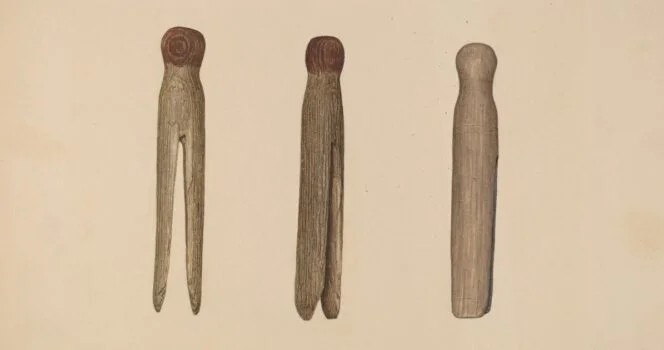
Long before technology sent single socks into a spinning purgatory, people were more resourceful, creating tools to effectively complete the most daunting of household chores
One of those tools is this wooden peg, which over the years evolved into a two-piece pin that secured items to a line. This was a significant improvement from the earlier model that fed socks and other garments to the wind, “a serious evil to washerwomen.”
Keep reading to learn more about this wooden tool!
Recently, an online user found little wooden dowels with two legs and went to social media looking for help in identifying the objects.
The Facebook post attracted a generation of nostalgic boomers, offering the answer: “Old school clothespins. [We] used them for hanging clean wet clothes outside on the [clothes] line to dry in the sun [and] fresh air!”
A wooden clothespin, also known simply as a clothes peg, is a traditional household tool used for hanging wet laundry on a clothesline to dry. Today, the pins typically consist of two wooden pieces hinged together at one end, with a spring mechanism that provides the necessary tension to grip onto the clothing.
The earliest carved clothespins date back to ancient times and were quite different from the wooden clothespins we are familiar with today. These early clothespins were typically handcrafted from natural materials such as wood, bone, or even stone, and oftentimes featured ornate patterns or motifs.
The modern wooden clothespin, as we know it today, emerged in the 19th century as a response to the growing need for a convenient and effective tool to hang laundry.
The earliest versions of the clothespins we know today, were handcrafted from solid wood, often maple or birch, and featured a simple design consisting of two pieces of wood hinged together with a small spring or metal wire.



